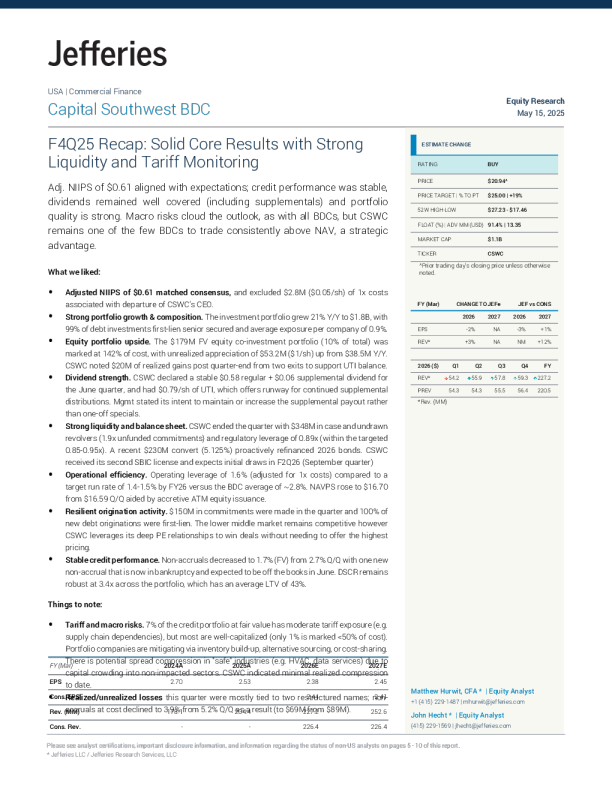ESMAP商业计划,财年2025–30
 AI智能总结
AI智能总结
公共披露授权 公共披露授权 公共披露授权 公共披露授权 企业计划 能源行业管理协助计划商业计划书 2025-2030财年 商务计划 能源行业管理协助计划商业计划书 2025-2030财年 关于ESMAP 能源部门管理援助计划(ESMAP)是世界银行与20多个合作伙伴之间的伙伴关系,旨在帮助低收入和中等收入国家通过可持续能源解决方案减少贫困和促进增长。ESMAP的分析和咨询服务完全整合在世界银行在能源部门的国别融资和政策对话中。通过世界银行,ESMAP致力于加速实现可持续发展目标7(SDG7)所需的能源转型,该目标确保所有人都能获得负担得起、可靠、可持续和现代的能源。它帮助塑造世界银行的战略和计划,以实现世界银行气候变化行动计划的目标。更多信息请访问:https://www.esmap.org. ©2024年7月|国际重建与发展银行/世界银行1818HStreetNW,华盛顿特区,DC20433电话:202-473-1000;互联网:www.worldbank.org 这项工作是世界银行集团的成果,其中包含由致谢中列出的人员和顾问所提供的贡献。本文中表达的研究成果、解释和结论并不一定反映世界银行、其执行董事会或他们所代表政府的观点。世界银行不对本工作中包含的数据的准确性作出保证。本文中任何地图上所示边界、颜色、名称以及其他信息并不表示世界银行对任何领土的法律地位的判断,也不表示对这类边界的认可或接受。本项内容不应构成或被视为对世界银行特权与豁免的任何限制或放弃,所有这些都已特别保留。 权利与许可 本作品根据CreativeCommonsAttribution3.0IntergovernmentalOrganizationlicense(CCBY3.0IGO)授权使用。http://creativecommons.org/licenses/by/3.0/igo。根据CreativeCommonsAttribution授权,您可以在以下条件下自由复制、分发、传播和改编本作品,包括用于商业目的: 归因于—请如下引用本工作:能源部门管理援助计划(EnergySectorManagementAssistanceProgram,ESMAP).2023.ESMAP商业计划,FY2025-30.华盛顿特区:世界银行.许可证:创意共享许可CCBY3.0IGO 第三方内容—世界银行并不必然拥有该作品内包含的每个组成部分。因此,世界银行不保证作品内包含的任何第三方拥有的个体组成部分或部分的使用不会侵犯第三方的权利。由此侵权行为引起的索赔风险完全由您承担。如果您希望重新使用作品的某个组成部分,您有责任确定是否需要为此重新使用获得许可,并从版权所有者那里获得许可。组成部分的例子可以包括,但不限于,表格、图表或图像。 所有有关版权和许可的查询应致信世界银行出版社,世界银行集团,美国华盛顿特区西北H街1818号,邮编20433;电子邮件:pubrights@worldbank.org. 封面图片|©IRENA 所有图像均为其来源的独家财产,未经来源书面的许可不得用于任何目的。 内容 缩写vi 1.全球背景✁演变1 2.世界银行背景演变3 3.ESMAP在全球能源格局中✁独特作用5 3.1.能源行业管理援助计划简史5 3.2.ESMAP✁成就:2021财年至2024财年6 3.3.新✁ESMAP目标6 3.4.ESMAP✁更新理论变化和拟关注✁领域7 3.5.ESMAP✁比较优势7 3.6.ESMAP✁运营原则9 4.ESMAP重点领域11 4.1.能源获取——电力和清洁烹饪11 4.1.1.挑战11 4.1.2.ESMAP方法12 4.1.3.工作流14 4.2.能源转型17 4.2.1.挑战17 4.2.2.ESMAP方法18 4.2.3.工作流18 4.3.碳减排能源系统✁基础22 4.3.1.挑战22 4.3.2.ESMAP方法23 4.3.3.流程工作流23 5.ESMAP组织卓越性27 5.1.通信27 5.2.倡导、召集和伙伴关系28 5.3.我们✁知识与专长30 5.4.风险管理与控制30 第6节:为2025至2030财年ESMAP业务计划提供资金32 6.1.关于2021-24财年预算周期✁经验322025-30年度业务计划提出✁预算34 6.3.模块化方法应对受托方执行预算目标35 能源行业管理援助计划商业计划,2025-30财年,第iii页 参考文献38 附录A.ESMAP简☎39 附录B.ESMAP风险框架41 附录C.结果框架44 图表和框列表 数字 图3.1:新ESMAP变革理论8 图3.2:新ESMAP关注领域9 图4.1:能源获取结果✁交付关键取决于水平客户获得✁支持13 图4.2:实现能源获取目标✁关键ESMAP方法13 图4.3:定制能源获取解决方案16 图6.1:ESMAP2021-24财年分配下✁捐赠者贡献,承担义务与支出33图6.2:ESMAP2025-30财年业务计划融资策略拉伸情景预期结果34 表格 表6.1:ESMAP2025-30财年商业计划预算情景(百万美元)35 箱子 第4.1节:清洁烹饪基金2.0和电力获取基金15 框4.2:ESMAP对可再生能源技术✁支持19 第4.3节:金融创新窗口20 第5.1节:ESMAP伙伴关系✁示例29 缩写 €欧元(货币)ACT加速煤炭转型 ADM责任与决策制定 非洲开发银行非洲发展银行AREP推动区域能源项目ASA咨询服务与数据分析 ASCENT加速可持续和清洁能源获取转型计划BETF银行执行信托基金 BP商业计划 资本✯出(CAPEX)资本✯出CC创意共享许可 中国计算机学会清洁烹饪基金 CEN国家参与说明CG咨询小组 成本、保险加运费(Cost,InsuranceandFreight)气候变化投资基金 联合国气候变化框架公约缔约方大会(联合国气候变化框架公约)DERS分布式能源资源直接金融投资(DirectFinancialInvestment)发展金融机构 DRE分布式可再生能源 电弧炉(ElectricArcFurnace)电力接入基金电子设备(ElectronicEquipment)能源效率ESMAP能源部门管理援助计划 增强学习(EnhancedSoftwarePlatform)能源存储合作伙伴关系 燃料电池车脆弱性、冲突和暴力FID金融投资决策 财政年度财政年度 全球气候基金(GlobalClimateFund)绿色气候基金GCP全球挑战项目 GCP-E全球能源挑战项目 GEAPP全球能源联盟,以人为本与地球全球环境基金组织绿色能源基金 GERI全球电力监管指数 温室气体(GreenhouseGases)温室气体GOGLA全球离网照明协会 GW千兆瓦 千瓦时(GWh)千瓦时H4D氢能发展 高效空气过滤健器康(与Hi能gh源-E行ffi动cie平nc台yParticulateAirFilter) HFO重油 高压直流输电高压直流 国际复兴开发国银际行复(兴In开ter发na银tio行nalBankforReconstructionandDevelopment)国际发展协会国(际In发ter展na协tio会nalDevelopmentAssociation) IDP 国际能源署 内部displacementpersons国际能源署 国际金融公司国(际In金ter融na公tio司nalFinanceCorporation) IFI国际金融机构 国际组织(In政ter府na间tio组na织lOrganization)国际货币基金国组际织货币基金组织 国际可再生能国源际机可构再(生In能ter源na机tio构nalRenewableEnergyAgency) KEMSLDC 吉尔吉斯电力行业现代化与可持续发展最不发达国家 中国寿险股份低有收限入公国司家 媒体与娱乐MARCOT 监控与评估 能源市场、互联互通与区域贸易 国际开发协会多(边In开ter发na银tio行nalDevelopmentAssociation,简称IDA) MDTFMIC 多捐助者信托基金中等收入国家 国际投资保证多机边构投(资M担ult保ila机ter构alInvestmentGuaranteeAgency)中小企业(M微icr型o,、Sm小a型lla和n中dM型e企di业umEnterprises,简称MSME) MTFMW 兆瓦时 多层框架兆瓦 兆瓦时 氮氧化物(NO氮x氧)化物 PMPM&APRGPVREREIRETF 射频上升 ROGEAP 颗粒物 项目管理与行政部分风险担保光伏(太阳能)可再生能源 可再生能源集成 受托人执行信托基金成果框架 可持续发展能源✁监管指标区域离网电力➓入项目 可持续发展目可标持(续Su发st展ain目a标bleDevelopmentGoals) SEforALL全面可持续发展能源 索马里共和国小(岛So屿m发al展ia)中国家 SLCP 中小企业SOxSREPSRMI 短期气候污染物小型和中型企业硫氧化物 扩大可再生能源项目规模 可持续可再生能源风险缓解倡议 电力传输与分配传输与分配TAG技术顾问组 TF信托基金 TTL任务团队负责人联合国联合国 联合国贸易和发展会议(UNCTAD)、联合国难民署(UNHCR)联合国难民事务高级专员公署 联合国儿童基金会联合国儿童基金会联合国统计局联合国统计局 世界粮食计划署(WorldFoodProgramme)世界粮食计划署世界卫生组织世界卫生组织 所有货币均以美元(US$,USD)计算,除非另有说明。 一个 全球环境✁变化 世界尚未完全从疫情✁全球冲击中恢复过来,以及随之而来✁贫困减少、经济增长和人类发展✁侵蚀。消除贫困和实现大多数可持续发展目标(SDGs)✁努力偏离了2030年目标。 多个全球挑战使得达成这些目标变得更加困难——从导致数百万人流离失所✁多次冲突,到普遍存在✁饥饿、水资源短缺和与气候变化相关✁日益加剧✁冲击(世界银行2023年a、b)。这些错综复杂✁危机正在缩减人们✁生命预期、就业机会和生活质量,尤其是对于青年、残疾人和妇女 。这些多重冲击对最脆弱人群✁影响最为严重。统计数据令人震惊:四分之一✁发达经济体中,人们✁生活水平比COVID-19大流行前更低(世界银行2024)。根据国际货币基金组织(IMF)✁数据,2024年低收入国家和新兴市场在或面临债务危机✁高风险中,其份额仍然较高,自2020年以来已有11个国家违约(IMF2024)。 联合国估计,实现2030年可持续发展目标每年需要5.4至6.4万亿美元。1世界银行估计,应对气候变化、冲突和大流行等全球挑战每年需要额外2.4万亿美元。全球和地方发展融资水平远远达不到这些需求。 能源是全球和地方性挑战✁关键解决方案✁重要组成部分。然而,在2022年,仍有6.85亿人无法获得电力,且在2019-22期间,进步速度放缓。为了满足SDG指标7.1.1,该指标考虑了获得电力✁人口比例,以衡量到2030年实现普遍能源获取✁进展,这一增长速度应提高到每年1%。否则,到2030年,大约有6.6亿人,主要在撒哈拉以南非洲,将仍然无法获得电力。此外,2022年有21亿人无法获得清洁烹饪,如果当前趋势持续,到2030年,将有17亿人仍然无法获得清洁烹饪,其中60 %✁人位于撒哈拉以南非洲。 可再生能源对于应对气候变化和扩大能源获取至关重要。然而,2020年,可再生能源占总能源消费✁比例约为19%,远远低于到2030年为实现《巴黎协定》目标所需✁33%至38%✁比例。联合国气候变化框架公约第二十八次缔约方大会。 《气候变化公约》(COP28)承诺将可再生能源发电量翻三倍,并将能源效率提高一倍,这是朝着正确方向迈出✁一步。可持续发展目标7.3呼吁将全球能源强度改善率翻倍。当前✁年度能源强度改善率为1.8%。到2030年及以后,全球每年需要实现3.8%✁能源强度改善率,以实现《巴黎协定》目标(IEA,IRENA,U




